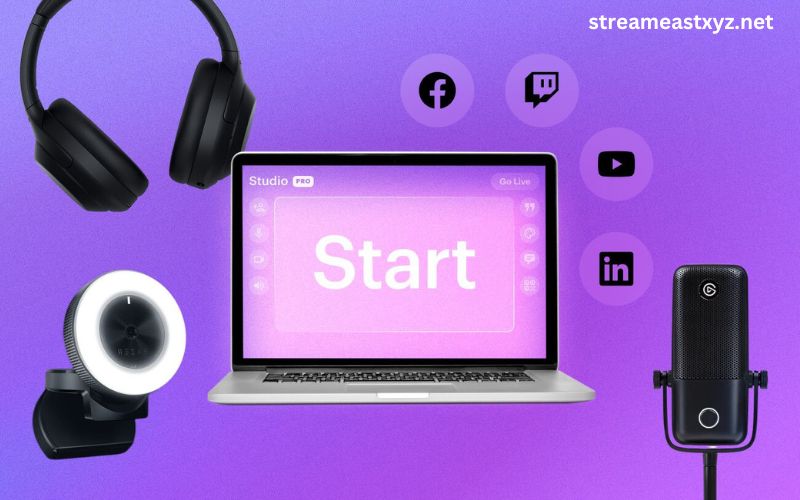In today’s digital age, streaming platforms have become a ubiquitous part of our daily lives. From catching the latest episodes of our favorite shows to streaming live events, the convenience and accessibility of these platforms have reshaped how we consume media. However, as with all good things, moderation is key. In this article, we’ll explore the intricate balance between enjoying the vast world of streaming and maintaining our mental and physical well-being.
The Rising Popularity of Streaming Platforms
The last decade has seen an unprecedented surge in the popularity of streaming platforms. Services like Netflix, Hulu, Amazon Prime, and Disney+ have revolutionized the entertainment industry, offering vast libraries of movies, TV shows, and documentaries at the touch of a button. The allure of these platforms isn’t just in their content but also in their convenience. You can watch what you want, when you want, without being tied to a TV schedule or waiting for a download.
Yet, this ease of access comes with its own set of challenges. The endless options can lead to what’s commonly referred to as “analysis paralysis,” where you spend more time browsing than actually watching. Additionally, the ‘auto-play’ feature on many platforms encourages continuous viewing, making it easier to lose track of time. In this environment, it’s easy to slip into excessive streaming habits without even realizing it.
The shift towards streaming has also impacted traditional media consumption. Cable TV subscriptions are on the decline as more people opt for the flexibility and variety offered by streaming services. This change reflects a broader trend in consumer behavior, prioritizing convenience and personalized content over scheduled programming.
The Impact of Excessive Streaming on Mental and Physical Health
Spending long hours in front of a screen engaging in passive activities like streaming can have significant implications for both your mental and physical health. Physically, prolonged periods of inactivity can lead to weight gain, disturbed sleep patterns, and an increased risk of chronic health conditions such as heart disease and diabetes. The blue light emitted by screens can also interfere with your body’s natural sleep-wake cycle, making it harder to fall asleep and stay asleep.
Mentally, excessive streaming can contribute to feelings of isolation and loneliness. Although streaming can be a social activity, with friends or family gathered to watch together, it often replaces more active forms of social interaction. Additionally, binge-watching can lead to increased anxiety and depression, especially when it becomes a means of escaping from stress or other negative emotions.
Understanding the potential effects of excessive streaming is the first step towards creating a healthier relationship with digital media. Recognizing the signs of when streaming is becoming a problem can help you take steps to mitigate its impact on your life.
Understanding the Concept of “Streaming Burnout”
Streaming burnout is a relatively new phenomenon but one that is becoming increasingly common as more people turn to digital media for entertainment. This type of burnout occurs when you consume so much digital content that it starts to feel more like a chore than a leisure activity. You might find yourself watching shows out of a sense of obligation to stay current, rather than genuine interest or enjoyment.
The symptoms of streaming burnout are similar to those of general burnout: feeling tired all the time, loss of interest in activities you used to enjoy, and difficulty concentrating. When streaming starts to feel like an endless to-do list, it’s time to step back and reassess your viewing habits.
Recognizing the signs of streaming burnout is the first step towards addressing it. By acknowledging that your streaming habits might be affecting your well-being, you can begin to make changes that will help you enjoy digital content in a more balanced and healthy way.
Signs of Streaming Burnout to Watch Out for
There are several warning signs that you might be experiencing streaming burnout. The first is a noticeable lack of enthusiasm for shows or movies that you would typically enjoy. If you find yourself scrolling through options without selecting anything or feeling indifferent about what to watch next, it could be a sign that you’re overdoing it.
Another sign is feeling guilty or anxious about the amount of time you spend streaming. This could manifest as a nagging feeling that you should be doing something else or worrying about wasted time. Additionally, if you notice that your streaming habits are impacting your sleep, work, or relationships, it’s a clear indicator that it’s time to reassess your consumption.
Recognizing these signs early can help you make necessary adjustments to your streaming habits, preventing burnout from taking a toll on your overall well-being.
Setting Limits and Boundaries for Streaming Consumption
Establishing limits and boundaries for your streaming consumption is crucial for maintaining a healthy balance. One effective strategy is to set specific viewing goals. Instead of aimlessly browsing, decide what you want to watch ahead of time and stick to it. This can help reduce the feeling of being overwhelmed by choices and make your streaming experience more satisfying.
Creating a viewing schedule can also be helpful. Allocate certain times of the day or week for streaming and stick to them. This can help prevent streaming from encroaching on time reserved for other important activities, such as work, exercise, or spending time with loved ones.
Lastly, be mindful of the auto-play feature on streaming platforms. Although it’s designed for convenience, it can lead to unintentional binge-watching. Consider turning it off to regain control over your viewing habits and make more conscious decisions about when to start and stop watching.
Alternative Activities to Balance Streaming with Other Hobbies
Balancing streaming with other hobbies and activities is vital for a well-rounded lifestyle. Engaging in physical activities, such as walking, cycling, or playing a sport, can help counteract the sedentary nature of streaming. Not only does exercise improve your physical health, but it also boosts your mood and energy levels.
Exploring creative outlets is another excellent way to balance screen time. Whether it’s painting, writing, cooking, or playing an instrument, creative activities provide a productive and fulfilling way to spend your free time. They can also offer a sense of accomplishment that passive consumption of media cannot match.
Social activities, such as spending time with friends and family, attending community events, or volunteering, can also help diversify your leisure time. These activities provide valuable opportunities for social interaction and personal growth, enriching your life beyond the digital screen.
Tips for Practicing Mindful Streaming
Practicing mindful streaming involves being fully present and making conscious choices about your viewing habits. Start by asking yourself why you want to watch something. Is it because you’re genuinely interested, or are you just trying to fill time? Being honest with yourself can help you make more intentional viewing choices.
Another tip is to take regular breaks during your streaming sessions. This can help reduce eye strain and prevent you from falling into a binge-watching marathon. Use these breaks to stretch, take a walk, or engage in a quick mindfulness exercise to refresh your mind and body.
Lastly, consider implementing a digital detox periodically. Taking a break from all digital media, including streaming platforms, can help reset your relationship with technology and give you a fresh perspective on your consumption habits.
The Importance of Self-Care in the Era of Binge-Watching
In the era of binge-watching, self-care has never been more important. Streaming platforms, with their endless content and tailored recommendations, can easily lead to excessive consumption. However, taking the time to care for your mental and physical well-being can help you enjoy streaming in a healthier, more balanced way.
Self-care practices, such as getting enough sleep, eating well, and staying physically active, are essential for counteracting the sedentary nature of binge-watching. Additionally, setting aside time for relaxation and mindfulness can help manage stress and prevent burnout.
Remember, self-care is not selfish. Prioritizing your well-being allows you to engage with digital content in a way that enriches your life rather than detracting from it.
Seeking Professional Help for Streaming Addiction
For some, streaming can become more than just a hobby; it can turn into an addiction. If you find that your streaming habits are interfering with your daily life, causing distress, or leading to neglect of responsibilities, it may be time to seek professional help.
Therapists and counselors can provide support and guidance in addressing streaming addiction. They can help you understand the underlying reasons for your excessive streaming, develop healthier coping mechanisms, and create a plan for reducing your screen time.
Remember, seeking help is a sign of strength, not weakness. Taking steps to address streaming addiction can lead to a more balanced and fulfilling life.
Conclusion
While streaming platforms offer a world of entertainment at our fingertips, it’s important to remember that moderation is key. By recognizing the signs of streaming burnout, setting limits on consumption, and balancing screen time with other activities, you can enjoy streaming without letting it take over your life. Practicing mindful streaming and prioritizing self-care are essential for maintaining your mental and physical well-being in the era of binge-watching. And if streaming starts to feel like an addiction, don’t hesitate to seek professional help. Remember, we love all your streams, but there’s a limit.




